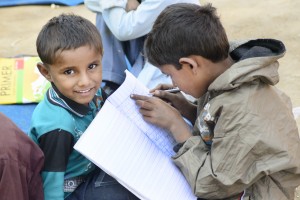After much debate on the post 2015 education agenda at the 58th Annual Comparative & International Education Society Conference 2014, it was repeatedly highlighted that access plus learning should be the key post-2015 goal as access without learning is not sustainable.
The Millennium Development Goal of achieving universal primary education in developing regions has reached about 90% – this means more kids (girls and boys) are attending schools than ever. However, post 2011 the progress on the goal has slowed down. There could be various reasons – one of them “could” be the ignorance of the “quality of education” being imparted to the children enrolled. No parent would like to keep sending their child to school if he/she is not learning. Reports such as “Towards Universal Learning: Recommendations from LMTF” and “Making Education a Priority in the Post 2015 Development Agenda” have also proved that in the long run, if the goal of universal primary education has to be achieved and sustained – it has to be linked to learning. If the children are not learning despite being enrolled in schools – we stand nowhere; children are most likely to drop out sooner than later or graduate with no learning leading to not being able to find a job in the market.
The results of ASER Pakistan Wealth Index 2013 coincide with the findings of the Learning Metrics Task Force i.e. the learning crisis is affecting the most marginalized groups of the economy the hardest. Children falling in the ‘poorest’ quartile have the lowest learning levels in Urdu/Sindhi/Pashto, English, and Arithmetic whereas the children in the ‘richest’ quartile have the highest learning levels. Furthermore, the learning levels of the poorest females are lower when compared to the learning levels of poorest males across all language and arithmetic competencies – 15% of the poorest females can read a story in their local language as compared to 21% poorest males. The data clearly indicates that access plus learning with a focus on inclusion and equity must be at the heart of the post-2015 education agenda. Goals and targets should take into account cross-cutting issues such as gender, wealth status leading to inequality, demographics, migration etc. The new goals should invest in citizenship and emphasize on human well-being.
Huma Zia is a Research & Policy Analyst at ASER Pakistan.
Tags: Activism, Development, Research & quality


at 8:23 am
A case well argued. We all need to understand that school buildings and enrolment are not an end but a means to an end, which you rightly point is learning. It is heartening that access plus leaning has been identified as a goal, and hopefully we will see steps towards achieving it soon.